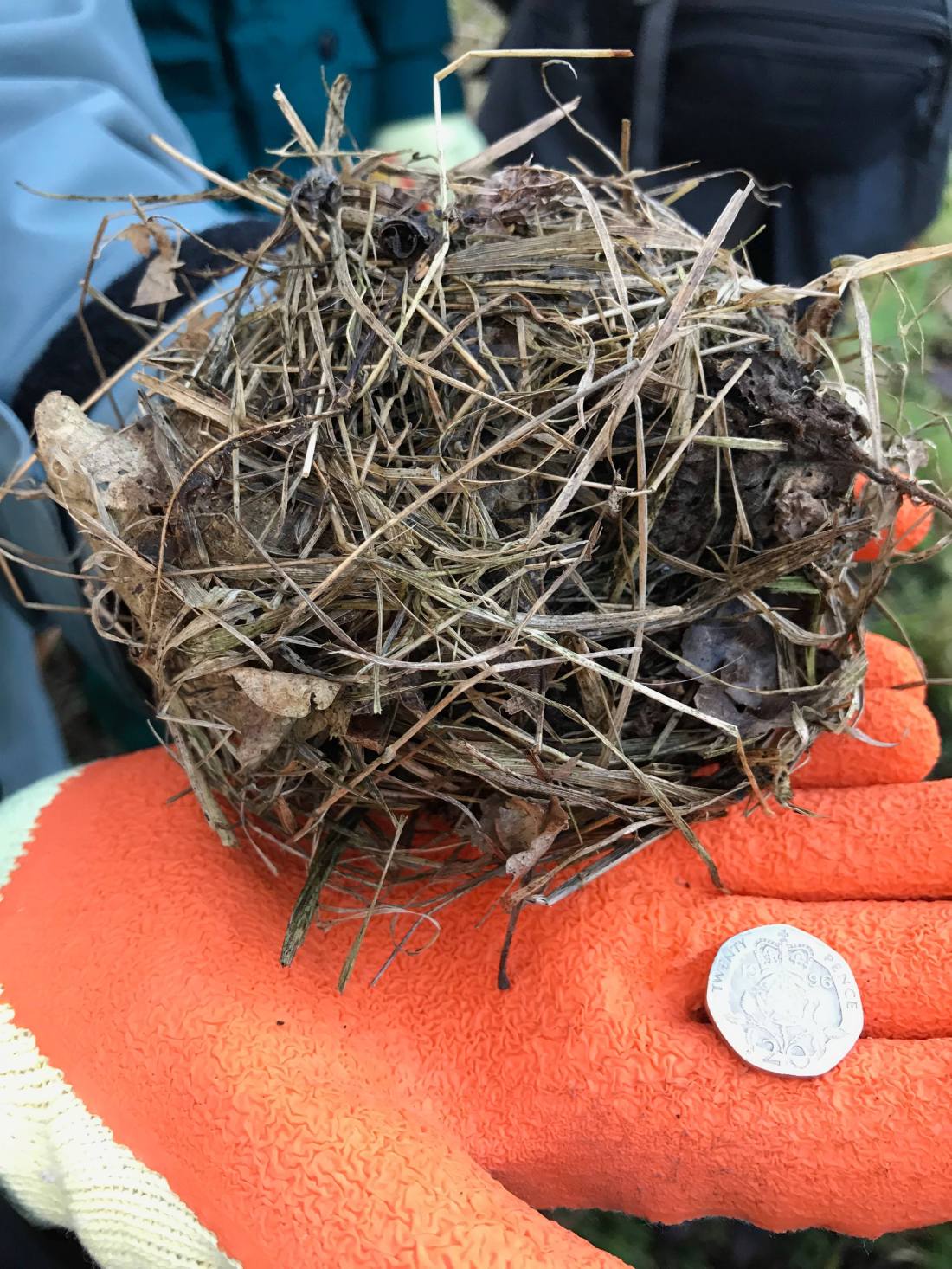Since autumn last year, volunteers have been scouting nature reserves around Sheffield and Rotherham for everything from newt eggs, to skylarks, to harvest mouse nests, and much more in between. I am one of these eager volunteers, working under the Wildlife Trust’s ‘Data for Nature’ initiative, a Heritage Fund project. I want to share with you why getting involved with ‘Data for Nature’ was one of the best decisions I made during my time at university. Volunteering for your local Wildlife Trust is not only a vital way of helping protect wildlife in your local area, it’s also great fun to get involved with!
I initially signed up to volunteer with the Wildlife Trust because I wanted experience in ecological surveys. However, my volunteering has become more than something to write on my CV. I’ve met so many like-minded people and learnt so much more about nature. You essentially get to go walking in nature reserves, collecting valuable ecological data on the way.
The first survey….harvest mice populations
The first ‘Data for Nature’ survey began in November last year, when we searched the Carr House Meadows reserve for harvest mouse nests. In case you’ve never seen one, the harvest mouse is the smallest rodent native to Europe. Adult harvest mice can weigh as little as a 2p piece! You’ll find harvest mice from central Yorkshire southwards, scurrying in long grasses and reeds. The harvest mouse is the only British mammal to have a prehensile tail, which it uses as a fifth limb to hold on to the grass stems it feeds and breeds in. In the breeding season, harvest mice weave dome-shaped nests out of grass. These are found between half a metre and a metre above-ground in dense vegetation, out of sight of predators stalking the grounds below.
- Whether or not 50% of the vegetation was over 0.5 metres tall.
- How well connected the area was.
- The dominant plant species in the area.
- The presence of any harvest mouse nests.
Why did we measure these things?

These aspects of the reserve were measured to assess how suitable it is as a breeding habitat for harvest mice. For example, the minimum height a harvest mouse likes to build its nest above ground is around 0.5 metres, so assessing whether of not more than 50% of the vegetation is at least this height allows us to see whether there is substantial tall grass available for the mice to nest in. A suitable breeding habitat would also be well connected to foraging grounds by dense grasses or shrub margins. This allows mice to move between their nest and foraging sites through dense grasses, which best obscures them from predators. We also identified the dominant plant species in the area to see which vegetation best supported nesting. In our training session, we were shown how to identify common grasses and shrubs in the reserve. We were also taught how to identify harvest mouse nests as some bird species, like reed warblers, construct similar looking spherical nests. This training was very useful when we did come across nests which turned out to belong to birds rather than harvest mice. When we found a suspected harvest mouse nest…
…read the rest of Libby’s harvest mice hunting adventure on her blog.

Data for Nature was born in response to the Sheffield State of Nature report, which stated that gaps in the city’s ecological records should be addressed, and is supported by the National Lottery Heritage Fund
- Find out more about Data for Nature
- Common or rare, record your wildlife sightings and help us build a better picture of the state of nature in Sheffield and Rotherham.